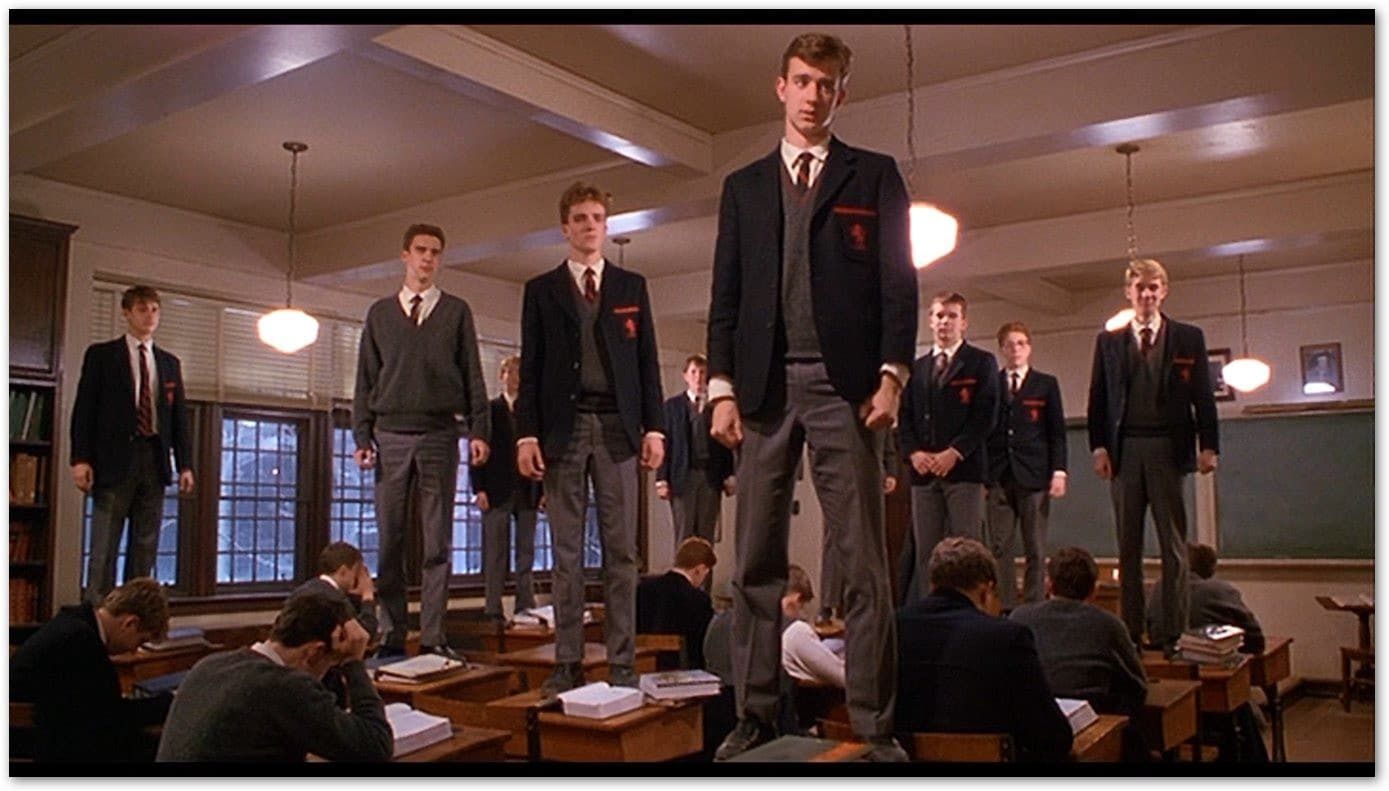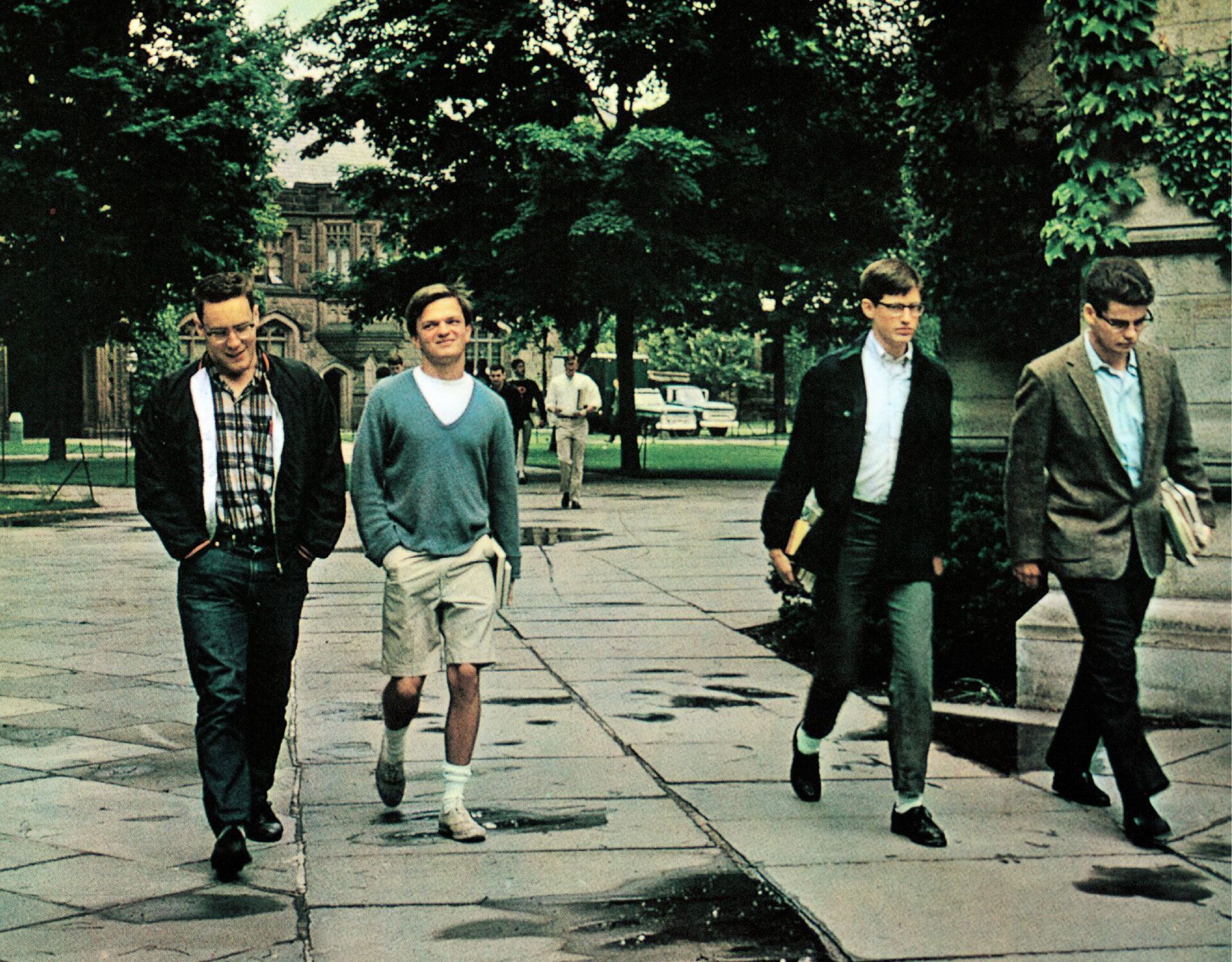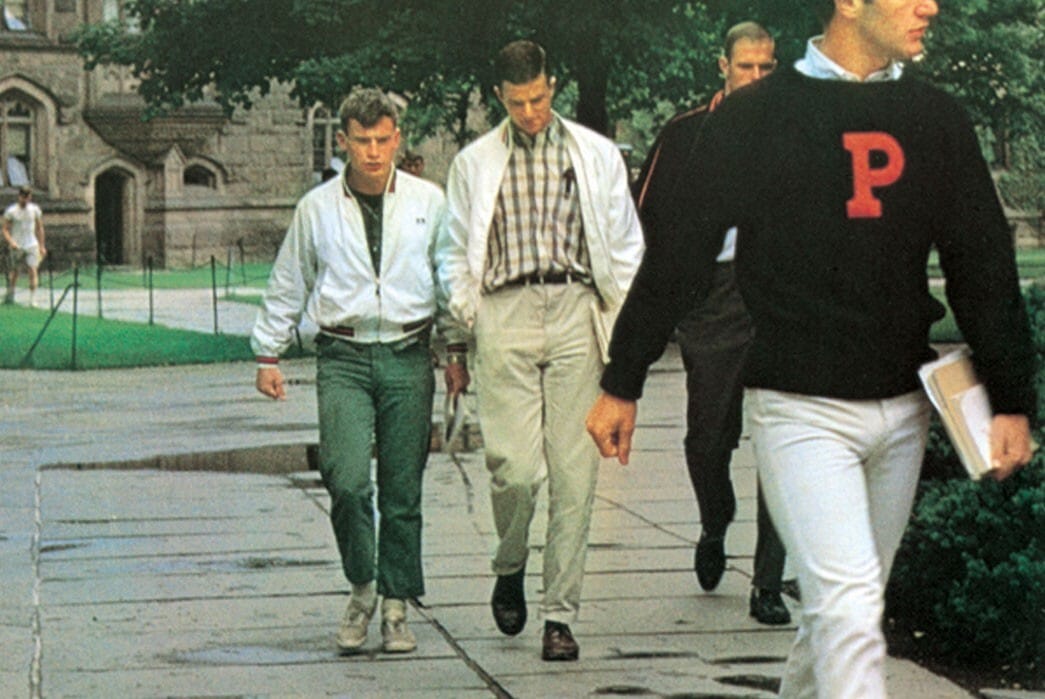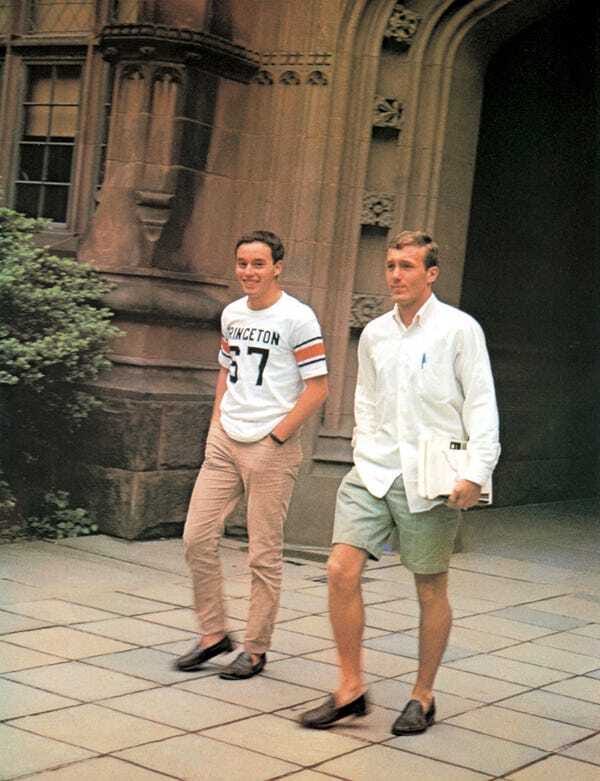Preppy isn’t just a fashion style, it’s a cultural accident that somehow became a uniform for looking effortlessly put together. It’s equal parts country club and college quad, where a good blazer can get you as far as a good GPA. And the funny thing? You’ve probably been wearing it without realizing it. That crisp Oxford shirt you love? Preppy. Those chinos you throw on when you “don’t feel like jeans”? Preppy. The loafers you bought because they “go with everything”? Extremely preppy. The truth is, preppy has quietly threaded itself into men’s wardrobes for over a century, not because it’s loud or flashy, but because it just works.
Laying the Groundwork for a Lifelong Preppy Style
Our story begins in the hallowed halls of America's most exclusive preparatory schools. Think Phillips Exeter Academy and Phillips Academy Andover. These weren't just schools; they were WASP finishing factories where the children of old-money families learned Latin, lacrosse, and the fine art of looking effortlessly superior.

Dead Poets Society is a field study in prep schools’ dress codes.
Picture this: It's the late 1800s, and wealthy families are basically playing real-life Monopoly with their kids' futures. They created these elite prep schools modeled after British "public" schools (which, confusingly, are actually super private, the British love a good paradox). The whole point was to keep their precious offspring away from the newly rich and the lower classes. Nothing says "we're better than you" quite like a mandatory blazer and tie at age 14.
The uniforms at these schools weren't just about looking neat; they were walking billboards of privilege. Navy blazers, crisp ties, and button-down shirts created a clean-cut, conservative look that screamed "my family has a summer house." But here's the kicker: the aesthetic was heavily influenced by the sports these kids played. Polo, golf, sailing, tennis. Basically, any activity where you could wear white pants without immediately ruining them. The clothing was a status symbol, a visual "keep out" sign for anyone who didn't summer in the Hamptons.
The Creation of the Preppy Style
Fast forward to college, where these prep school graduates descended upon Ivy League universities like a well-dressed swarm of future CEOs. Harvard, Yale, Princeton, these weren't just schools, they were the next chapter in the preppy style evolution.

Take Ivy is a treasure chest for preppy inspo
Here's where things get interesting: once freed from the strict dress codes of prep school, students got... creative. After World War I, sportswear crashed the party like an uninvited guest who ends up being the life of it. Students started mixing athletic clothing with their traditional formal pieces, creating a look that was somehow both casual and classy. Letter sweaters with white jeans? Sure! Jerseys with loafers? Why not! Pennies in those loafers? Absolutely!

More inspo from Take Ivy
This wasn't just fashion, it was a statement. By co-opting working-class athletic wear and giving it an elite spin, these students were basically saying, "We can make anything look expensive." Brands like Brooks Brothers (founded way back in 1818. Yes, they've been making you look good since before your great-great-great-grandparents were born) and J. Press specifically targeted these WASP students, providing the "ready-made" garments that became the foundation of the look.
The style became less about a rigid uniform and more about a shared aesthetic that whispered, "I know people at the yacht club."

Another shot from Take Ivy
The Evolution of Preppy Style
Buckle up, because preppy style has been on quite the journey from exclusive club to global phenomenon.
1890s-1900s: Preppy is born in the hallowed halls of northeastern prep schools. It's exclusive, it's expensive, and it's definitely not for you (unless you're reading this from your family's third home).
1920s: The term "preppy" starts floating around. The style begins spreading beyond the Northeast through the magic of media and advertising. Suddenly, everyone wants to look like they went to boarding school.
1930s: Plot twist! College women start adopting the look. In 1934, "Lady Levi's" were introduced, and jeans officially became preppy. Yes, jeans. The same jeans your dad wears to mow the lawn.
1950s-1960s: The golden age! This is peak Ivy League style. Men are wearing chinos, penny loafers, and blazers. Women are rocking twinsets and pearls. Everyone looks like they're about to attend a very important meeting about nothing in particular.
1967: The formal Ivy League look starts to decline as American fashion gets more casual. Apparently, people got tired of wearing ties to breakfast.
1970: The term "preppy" enters popular culture, notably used mockingly in the film Love Story. Nothing says "I've made it" quite like being insulted in a major motion picture.
1980: Lisa Birnbach drops The Official Preppy Handbook, a satirical guide that accidentally becomes the bible of preppy style. It's like she wrote a joke and everyone took it seriously. The book makes preppy accessible to the masses, which is hilariously ironic given preppy's exclusive origins.
1980s: PREPPY EXPLOSION! Thanks to the handbook, everyone's wearing pastel polo shirts with popped collars, khakis, and sweaters tied around their shoulders. Tommy Hilfiger, Calvin Klein, Ralph Lauren, and Lacoste are printing money. Princess Diana and Brooke Shields are the style icons. It's a beautiful, pastel-colored time to be alive.
2010: Birnbach releases True Prep, updating the handbook for the 21st century. Turns out, preppy needed a software update.
Today: Preppy is having another renaissance, but now it's about sustainability, individuality, and mixing high and low fashion. It's less "my family owns a bank" and more "I appreciate quality basics and also climate change is real."
The Preppy Wardrobe Centerpieces
Let's break down the essential pieces that make up the preppy uniform. These are the items that have survived decades of fashion trends because, well, they're just that good.
Penny Loafers: Classic slip-on shoes, especially Bass Weejuns. They're called penny loafers because people used to stick pennies in the little slot on top. Why? Because the 1950s were a simpler time, and people needed hobbies.
Sperry Top-Sider Boat Shoes: Invented in 1935 by Paul Sperry after he studied his dog's paws for traction inspiration. Yes, really. These non-slip deck shoes became iconic even if you've never set foot on a boat in your life.
Oxford Cloth Button-Down Shirts (OCBDs): The cornerstone of preppy style. Brooks Brothers perfected the collar roll, and preppy enthusiasts have been obsessing over it ever since. It's a shirt. But it's THE shirt.
Polo Shirts: Thanks to Lacoste and Ralph Lauren, the polo shirt became a unisex staple. Wear it in pastel or primary colors, and boom—instant prep. Bonus points if you pop the collar (though please don't).
Cricket Sweaters / Cable Knit Sweaters: Often made of pure wool, these V-neck beauties are perfect for layering. They say, "I'm cozy, but make it classy." Argyle patterns are also acceptable and encouraged.
Club Blazers / Navy Blazers: The single-breasted blue blazer is the Swiss Army knife of preppy fashion. Wear it to a job interview, a yacht party, or your kid's soccer game. It works everywhere.
Striped and Knit Ties: Because sometimes you need to look put-together, but not too put-together. The striped repp tie is a classic; the knit tie is its more casual cousin.
Chinos / Khaki Pants: The characteristic preppy pant. Khakis are so preppy that there's even a specific faded red version called "Nantucket Reds" that are basically a status symbol in pant form.
Madras Pants and Shorts: This distinctive plaid pattern in bright colors is the preppy wardrobe's way of saying, "I'm fun!" It's the bold exception to an otherwise solid-colored palette.
At its core, preppy isn’t about class, or money, or owning a sailboat (though let’s be honest, it helps). It’s about longevity, clothes designed to last, both in quality and in taste. Every generation tweaks it, mocks it, revives it, but it never really goes away. Maybe that’s because preppy is the rare style that feels both safe and aspirational at the same time. It says, “I care, but not too much.” And in a world where trends change faster than your algorithm can refresh, there’s something quietly rebellious about sticking with what’s timeless.
